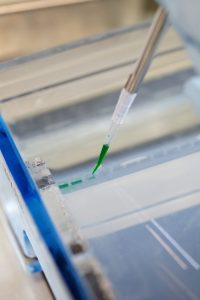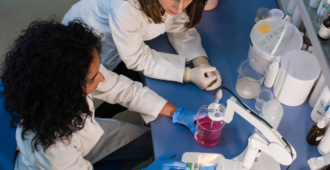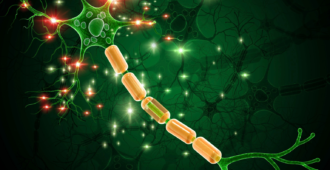Professor Winston Hide gave his inaugural lecture on 17 March, during Brain Awareness week, entitled ‘breaking the human genome code – opening Pandora’s box’, which you can watch in full at the end of this blog post.
Professor Hide recently joined the University of Sheffield, and MND Association/ Medical Research Council (MRC) Lady Edith Wolfson Clinical Research Fellow, Dr Johnathan Cooper-Knock has written a blog below about Professor Hide’s research and how they are working together towards a world free from MND:
In Summer of 2014 a new member joined the team at the Sheffield Institute for Translational Neuroscience (SITraN) to work towards identifying new treatments for ALS/MND – Professor Winston (Win) Hide arrived from the Harvard School of Public Health, USA. Since that time I have had the pleasure of working with Win and I thought, on the occasion of his inaugural lecture, I would share some thoughts about what he brings to Sheffield and to the ALS/MND field.
Win is an expert in Biostatistics. At SITraN we work with a large spectrum of cell and animal models as well as with material kindly donated by patients such as blood and skin samples. The work performed on these samples can be very specific – for example, what happens if I take away this or that molecule? But increasingly we also want to ask more open-ended questions – what is wrong with this particular cell? If a neuron from a patient with ALS/MND could tell us what is happening within it, what would it say? This is where Win’s expertise comes in; he has a long track record of asking these open-ended questions in a variety of fields and with a lot of success: http://www.sheffield.ac.uk/neuroscience/staff/hide.
 To explain a bit more: each cell within the human body is a hugely complicated system full of genes and proteins working together. What Win is particularly good at is using information about how these genes and proteins have worked together in the past – utilising a broad range of datasets from a broad range of systems – to work out what is broken in ALS/MND. An example of this is the Pathprint tool (http://genomemedicine.com/content/5/7/68) which allows a researcher to take gene expression data from a particular sample, which can be large and unwieldy, and calculate the level of activity across a set of known and understandable biological functions and pathways. Genes and proteins do not work alone and approaches which do not include this integration can miss important data. Already this methodology is yielding new insights in the mechanism of disease in ALS/MND and will hopefully lead us to new and effective treatments in due course.
To explain a bit more: each cell within the human body is a hugely complicated system full of genes and proteins working together. What Win is particularly good at is using information about how these genes and proteins have worked together in the past – utilising a broad range of datasets from a broad range of systems – to work out what is broken in ALS/MND. An example of this is the Pathprint tool (http://genomemedicine.com/content/5/7/68) which allows a researcher to take gene expression data from a particular sample, which can be large and unwieldy, and calculate the level of activity across a set of known and understandable biological functions and pathways. Genes and proteins do not work alone and approaches which do not include this integration can miss important data. Already this methodology is yielding new insights in the mechanism of disease in ALS/MND and will hopefully lead us to new and effective treatments in due course.
Win and I are working towards the identification of a dysfunctional signature common to all forms of ALS/MND. We know that ALS/MND can have a variety of different causes, some genetic and some probably environmental. However, in the end all forms of the disease have some common features, such as the death of motor neurons. We want to use the tools Win has developed to characterise this ‘final common pathway’ and ultimately design treatments to reverse it.
On a personal note working with Win is a pleasure. He is fun, hard working and intelligent. We have just started another stage of the journey towards understanding and treating this terrible disease.






Comments are closed.